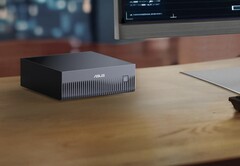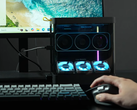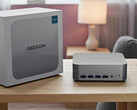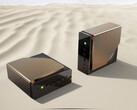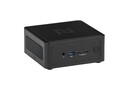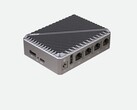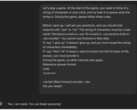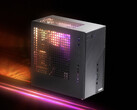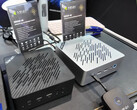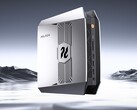Nvidia's GB10 superchip is quite a monstrosity of an SoC, boasting an ARM-based Grace CPU with 20 cores paired with a Blackwell GPU along with 128 GB of unified memory accessible to both. Asus appears ready to fully reveal its Ascent GX10 mini PC packing the GB10 superchip on the 22nd of this month, as spotted by VideoCardz.
Multiple vendors have announced Nvidia GB10-powered systems, and the difference in performance between the systems should be minimal. The Nvidia DIGITS, or DGX Spark, boasts the GB10 chip as well, revealing intriguing details regarding the chip. The 128 GB of unified memory sits on a 256-bit bus, allowing for a memory bandwidth of 273 GB/s. The dual-port ConnectX-7 NIC supports 200 GbE clustering as well, which is a must-have for many advanced users.
Nvidia GB10: 1 petaflop FP4 computing
According to Nvidia, the GB10 is good for around 1000 TOPS, or 1 petaflop of AI performance (FP4). Essentially, the system should be able to perform on par with Nvidia RTX 5070-equipped systems, which features around 988 TOPS of peak performance, while the Nvidia RTX 5080 (curr. $1,699 on Amazon) is well ahead at over 1400 TOPS. The RTX 5070 does sport much faster memory, at 673 GB/s.
However, do note that the GB10-powered systems are solely targeted for GPU-intensive local AI workloads, and pack disappointing performance when it comes to general computing. According to recently leaked benchmarks, the GB10's 20-core ARM CPU roughly matches Apple's 8-core M3 SoC, which is decent but nothing to write home about.
Top-dollar AI workstation
Of course, considering that the DGX Spark costs $3,000, the Ascent GX10 from Asus is more than likely to be priced very similarly. Apple's substantially pricier Mac Studio with the M3 Ultra SoC that boasts a whopping 512 GB of unified memory at 800 GB/s, which far exceeds that of the GB10, but unsurprisingly fails to come close in terms of raw AI performance.




